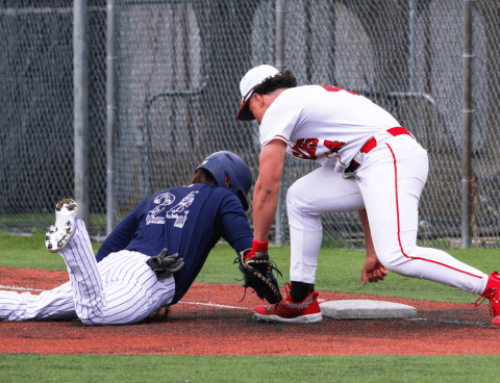Join the Freak Show
How does a 5’10”, 175-pound, four-year MLB veteran pitcher strike out the best batters in the National League? Well, he eats his Wheaties of course, but he also happens to have one helluva fastball.
San Francisco Giants ace Tim Lincecum may not be the ideal size for a pro pitcher. But that hasn’t stopped him from winning two Cy Youngs and leading the NL in K’s for the past two seasons. “The Freak’s” record so far this year is not quite as impressive as usual—11-5, 3.15 ERA, with four blown saves by his bullpen—but he’s still in a tremendous position to once again lead the League in strikeouts.
How monumental is that? Only two other NL pitchers, Warren Spahn (1949-52) and Randy Johnson (1999-2002), have accomplished the feat since FDR was in the Oval Office.
But the question remains, how does “The Beast” do it? Former Red Sox pitcher turned instructional pitching coach, Dick Mills, explains, “The real secret to Tim Lincecum’s overpowering velocity is all stored within his pitching mechanics. It obviously has little to do with his being big.”
Mills breaks down Lincecum’s mechanics into six body movements that he performs extraordinarily well. They can be replicated by any pitcher who want to increase his velocity:
– Move fast from back leg to front leg
– Use back leg to move out very low to ground
– Get throwing arm up very late during delivery (use a late hand break)
– Increase stride length to over 100 percent of pitcher’s height
– Brace front leg and hip to increase upper body speed
– Land in straight line towards plate
Just don’t expect to go from 70 to 90 mph in a few weeks. It took several years for “The Franchise” to achieve his speed range of 95-100 mph. It happened gradually, while he was working on his mechanics day and night with his personal pitching coach (his father).
Source: espn.com, pitching.com
Photo: zimbio.com
RECOMMENDED FOR YOU
MOST POPULAR
Join the Freak Show
How does a 5’10”, 175-pound, four-year MLB veteran pitcher strike out the best batters in the National League? Well, he eats his Wheaties of course, but he also happens to have one helluva fastball.
San Francisco Giants ace Tim Lincecum may not be the ideal size for a pro pitcher. But that hasn’t stopped him from winning two Cy Youngs and leading the NL in K’s for the past two seasons. “The Freak’s” record so far this year is not quite as impressive as usual—11-5, 3.15 ERA, with four blown saves by his bullpen—but he’s still in a tremendous position to once again lead the League in strikeouts.
How monumental is that? Only two other NL pitchers, Warren Spahn (1949-52) and Randy Johnson (1999-2002), have accomplished the feat since FDR was in the Oval Office.
But the question remains, how does “The Beast” do it? Former Red Sox pitcher turned instructional pitching coach, Dick Mills, explains, “The real secret to Tim Lincecum’s overpowering velocity is all stored within his pitching mechanics. It obviously has little to do with his being big.”
Mills breaks down Lincecum’s mechanics into six body movements that he performs extraordinarily well. They can be replicated by any pitcher who want to increase his velocity:
– Move fast from back leg to front leg
– Use back leg to move out very low to ground
– Get throwing arm up very late during delivery (use a late hand break)
– Increase stride length to over 100 percent of pitcher’s height
– Brace front leg and hip to increase upper body speed
– Land in straight line towards plate
Just don’t expect to go from 70 to 90 mph in a few weeks. It took several years for “The Franchise” to achieve his speed range of 95-100 mph. It happened gradually, while he was working on his mechanics day and night with his personal pitching coach (his father).
Source: espn.com, pitching.com
Photo: zimbio.com












